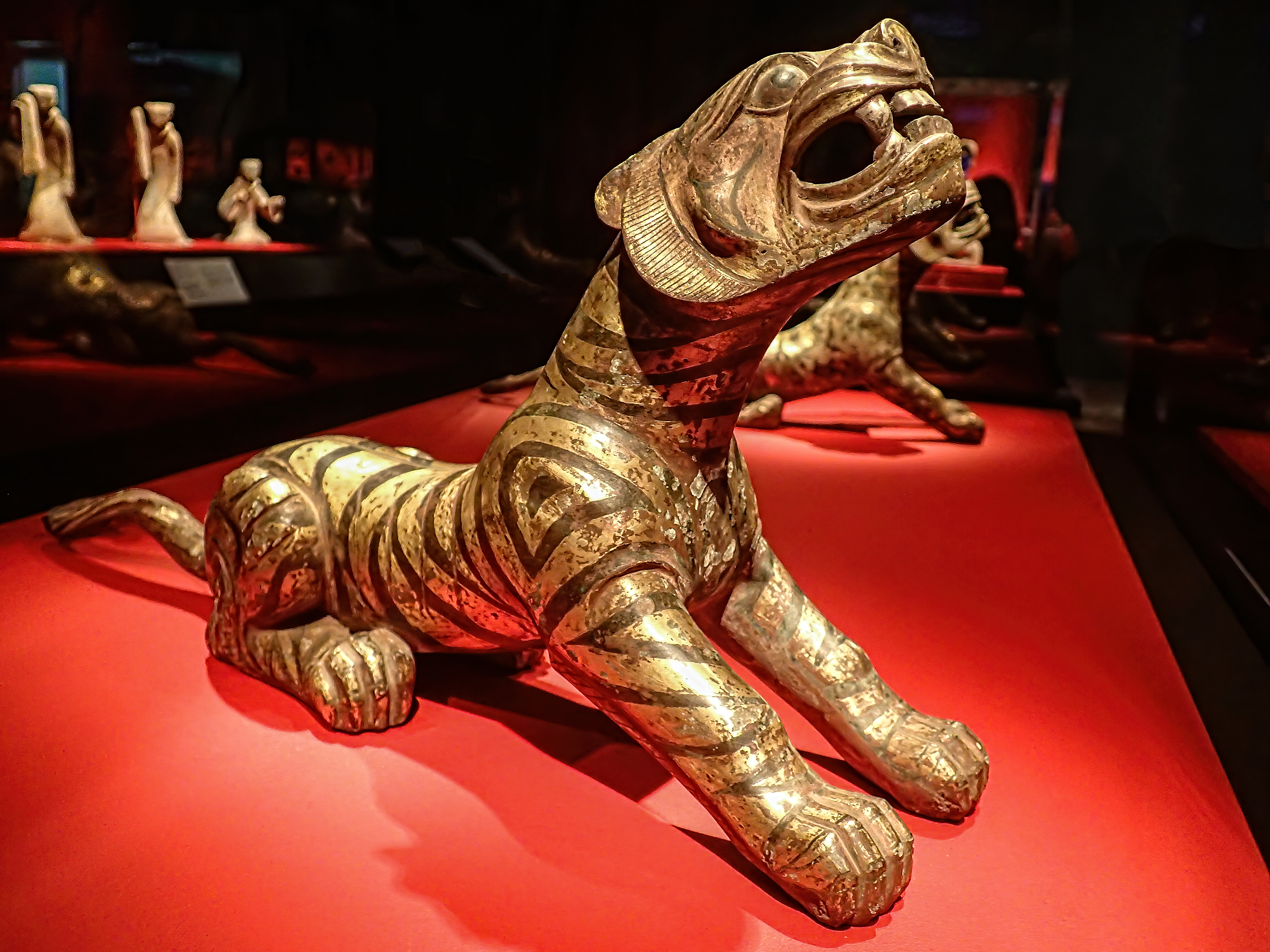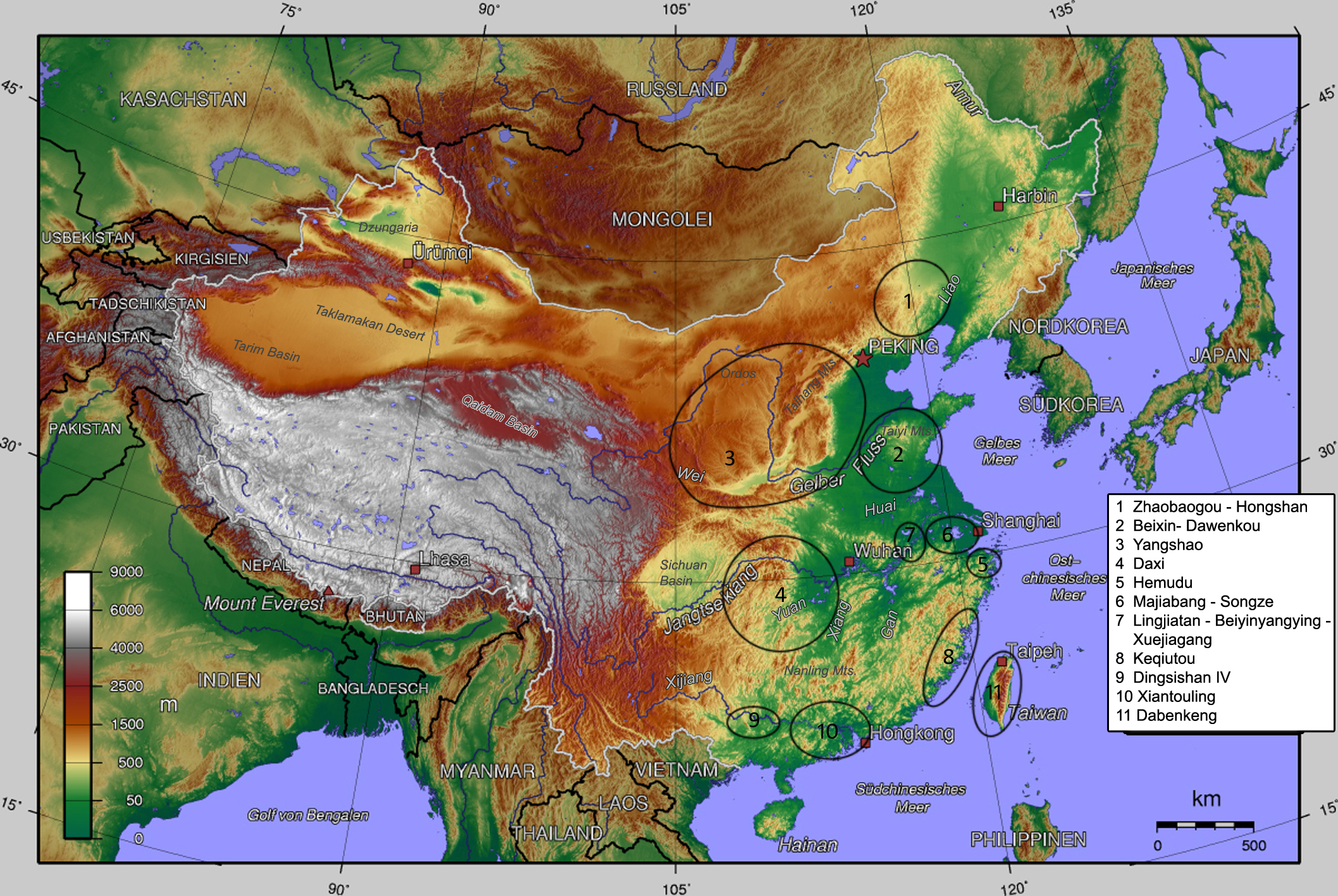|
History Of Metallurgy In China
Metallurgy in China has a long history, with the earliest metal objects in China dating back to around 3,000 BCE. The majority of early metal items found in China come from the North-Western Region (mainly Gansu and Qinghai, 青海). China was the earliest civilization to use the blast furnace and produce cast iron. Copper Archaeological evidence indicates that the earliest metal objects in China were made in the late fourth millennium BCE. Copper was generally the earliest metal to be used by humanity, and was used in China since at least 3000 BCE. Early metal-using communities have been found at the Qijia and Siba sites in Gansu, with similar sites in Xinjiang in the west and Shandong, Liaoning and Inner Mongolia in the east and north. The Central Plain sites associated with the Erlitou culture also contain early metalworks.Katheryn M. Linduff, Jianjun Mei (2008)''Metallurgy in Ancient Eastern Asia: How is it Studied? Where is the Field Headed?'' (PDF)The British Museum Co ... [...More Info...] [...Related Items...] OR: [Wikipedia] [Google] [Baidu] |
Jade
Jade is a mineral used as jewellery or for ornaments. It is typically green, although may be yellow or white. Jade can refer to either of two different silicate minerals: nephrite (a silicate of calcium and magnesium in the amphibole group of minerals), or jadeite (a silicate of sodium and aluminium in the pyroxene group of minerals). Jade is well known for its ornamental use in East Asian, South Asian, and Southeast Asian art. It is commonly used in Latin America, such as Mexico and Guatemala. The use of jade in Mesoamerica for symbolic and ideological ritual was influenced by its rarity and value among pre-Columbian Mesoamerican cultures, such as the Olmecs, the Maya, and other ancient civilizations of the Valley of Mexico. Etymology The English word ''jade'' is derived (via French and Latin 'flanks, kidney area') from the Spanish term (first recorded in 1565) or 'loin stone', from its reputed efficacy in curing ailments of the loins and kidneys. ''Nephrite'' is der ... [...More Info...] [...Related Items...] OR: [Wikipedia] [Google] [Baidu] |
Shijiahe Culture
The Shijiahe culture (2500–2000 BC) was a late Neolithic culture centered on the middle Yangtze River region in Shijiahe Town, Tianmen, Hubei Province, China. It succeeded the Qujialing culture in the same region and inherited its unique artefact of painted spindle whorls. Pottery figurines and distinct jade worked with advanced techniques were also common to the culture. Overview The culture is named after its type site, the Shijiahe site cluster, in Tianmen, Hubei, in the Middle Yangtze Valley. The lower layer of the site belonged to the Qujialing culture. The city site is said to be a "nearly perfect square" of in area and was densely populated. It may have housed from between 15,000 and 50,000 inhabitants within the settlement's walls. At Dengjiawan, within the Shijiahe site cluster, some pieces of copper were discovered, making these the earliest copper objects discovered so far in southern China. The primary mode of travel was thought to be watercraft. People even built ... [...More Info...] [...Related Items...] OR: [Wikipedia] [Google] [Baidu] |
Dongxiang Autonomous County
Dongxiang Autonomous County (; Santa: Dunxianzu Zizhixien) is an autonomous county in the Linxia Hui Autonomous Prefecture, province of Gansu of the People's Republic of China. It was established as a Dongxiang ethnic autonomous area in 1950. Historically, Dongxiang has long been directly under the jurisdiction of Linxia. During the Republic of China (1912–1949) period, its area was divided between the surrounding counties. Its population in 2020 was 381,700, 88% of whom belonging to the Dongxiang minority group. As of 1993, half of the total Dongxiang minority population lived in the county. At least until the end of the 20th century, Dongxiang County was very impoverished and undeveloped, having a literacy rate of just 15%, the lowest in China. In 2017, it had the highest poverty rate of Gansu, already the poorest province in China. Dongxiang County has a typical Loess Plateau landscape, with numerous gullies and mountains and a dry climate. Administrative divisions Dong ... [...More Info...] [...Related Items...] OR: [Wikipedia] [Google] [Baidu] |
Linxia Hui Autonomous Prefecture
Linxia Hui Autonomous Prefecture (, Xiao'erjing: ), formerly known as Hezhou (河州) and Baohan (枹罕), is located in Gansu Province, south of the provincial capital Lanzhou, bordering Qinghai to the west. It is an autonomous prefecture for the Muslim Hui people, a large Chinese ethnic group. It also includes two autonomous counties for other Muslim groups, namely Bonan, Dongxiang and Salar. Geography and climate Linxia Prefecture is located in southwestern central Gansu. It is just south of Lanzhou and borders Qinghai Province in the west, Gannan Tibetan Autonomous Prefecture in the south and the Dingxi prefecture-level city in the east. The terrain is highlands, mountains and ''loess'' hills. Elevation averages 2000 meters above sea-level. The Yellow River, which gets its muddy yellow color from the loess, runs through the northwestern part of the prefecture. Dammed at Liujiaxia (Yongjing County), it forms the large Liujiaxia Reservoir in the north-central part of the c ... [...More Info...] [...Related Items...] OR: [Wikipedia] [Google] [Baidu] |
Majiayao Culture
The Majiayao culture was a group of neolithic communities who lived primarily in the upper Yellow River region in eastern Gansu, eastern Qinghai and northern Sichuan, China. The culture existed from 3300 to 2000 BC. The Majiayao culture represents the first time that the upper Yellow River region was widely occupied by agricultural communities and it is famous for its painted pottery, which is regarded as a peak of pottery manufacturing at that time. History The archaeological site was first found in 1924 near the village of Majiayao in Lintao County, Gansu by Swedish archaeologist Johan Gunnar Andersson, who considered it part of the Yangshao culture. Following the work of Xia Nai, the founder of modern archaeology in the People's Republic of China, it has since been considered a distinct culture, named after the original site, whereas previously it had been referred to as the "Gansu Yangshao" culture. This culture developed from the middle Yangshao (Miaodigou) phase, through an ... [...More Info...] [...Related Items...] OR: [Wikipedia] [Google] [Baidu] |
Shaanxi
Shaanxi (alternatively Shensi, see #Name, § Name) is a landlocked Provinces of China, province of China. Officially part of Northwest China, it borders the province-level divisions of Shanxi (NE, E), Henan (E), Hubei (SE), Chongqing (S), Sichuan (SW), Gansu (W), Ningxia (NW) and Inner Mongolia (N). Shaanxi covers an area of over with about 37 million people, the 16th highest in China. Xi'an – which includes the sites of the former Capitals of China, Chinese capitals Fenghao and Chang'an – is the Xi'an, provincial capital as well as the largest city in Northwest China and also one of the oldest cities in China and the oldest of the Historical capitals of China, Four Great Ancient Capitals, being the capital for the Western Zhou, Western Han, Sima Jin, Jin, Sui dynasty, Sui and Tang dynasty, Tang List of Chinese dynasties, dynasties. Xianyang, which served as the Qin dynasty capital, is just north across Wei River. The other Prefectures of China, prefecture-level pr ... [...More Info...] [...Related Items...] OR: [Wikipedia] [Google] [Baidu] |
Yangshao Culture
The Yangshao culture (仰韶文化, pinyin: Yǎngsháo wénhuà) was a Neolithic culture that existed extensively along the middle reaches of the Yellow River in China from around 5000 BC to 3000 BC. The culture is named after the Yangshao site, the first excavated site of this culture, which was discovered in 1921 in Yangshao town, Mianchi County, Sanmenxia, western Henan Province by the Swedish geologist Johan Gunnar Andersson (1874–1960). The culture flourished mainly in the provinces of Henan, Shaanxi and Shanxi. Recent research indicates a common origin of the Sino-Tibetan languages with the Cishan, Yangshao and/or the Majiayao cultures. Economy Subsistence The main food of the Yangshao people was millet, with some sites using foxtail millet and others proso millet, though some evidence of rice has been found. The exact nature of Yangshao agriculture, small-scale slash-and-burn cultivation versus intensive agriculture in permanent fields, is currently a matte ... [...More Info...] [...Related Items...] OR: [Wikipedia] [Google] [Baidu] |
Yellow River
The Yellow River or Huang He (Chinese: , Standard Beijing Mandarin, Mandarin: ''Huáng hé'' ) is the second-longest river in China, after the Yangtze River, and the List of rivers by length, sixth-longest river system in the world at the estimated length of . Originating in the Bayan Har Mountains in Qinghai province of Western China, it flows through nine provinces, and it empties into the Bohai Sea near the city of Dongying in Shandong province. The Yellow River basin has an east–west extent of about and a north–south extent of about . Its total drainage area is about . The Yellow River's basin was the Yellow River civilization, birthplace of ancient Chinese, and, by extension, Far East, Far Eastern civilization, and it was the most prosperous region in early Chinese history. There are frequent devastating natural disasters in China, floods and course changes produced by the continual elevation of the river bed, sometimes above the level of its surrounding farm fi ... [...More Info...] [...Related Items...] OR: [Wikipedia] [Google] [Baidu] |
Slag
Slag is a by-product of smelting (pyrometallurgical) ores and used metals. Broadly, it can be classified as ferrous (by-products of processing iron and steel), ferroalloy (by-product of ferroalloy production) or non-ferrous/base metals (by-products of recovering non-ferrous materials like copper, nickel, zinc and phosphorus). Within these general categories, slags can be further categorized by their precursor and processing conditions (e.g., Blast furnace (BF) slags, air-cooled blast furnace (ACBF) slag, basic oxygen furnace (BOF) slag, and electric arc furnace (EAF) slag) . Due to the large demand for these materials, slag production has also significantly increased throughout the years despite recycling (most notably in the iron and steelmaking industries) and upcycling efforts. The World Steel Association (WSA) estimates that 600 kg of by-products (~90 wt% is slags) are generated per tonne of steel produced. Composition Slag is usually a mixture of metal oxides and sili ... [...More Info...] [...Related Items...] OR: [Wikipedia] [Google] [Baidu] |
Hongshan Culture
The Hongshan culture () was a Neolithic culture in the West Liao river basin in northeast China. Hongshan sites have been found in an area stretching from Inner Mongolia to Liaoning, and dated from about 4700 to 2900 BC. The culture is named after (), a site in Hongshan District, Chifeng. The site was discovered by the Japanese archaeologist Torii Ryūzō in 1908 and extensively excavated in 1935 by Kōsaku Hamada and Mizuno Seiichi. Historical context In northeast China, Hongshan culture was preceded by Xinglongwa culture (6200–5400 BC), Xinle culture (5300–4800 BC), and Zhaobaogou culture, which may be contemporary with Xinle and a little later. The Yangshao culture of the Yellow River existed contemporaneously with the Hongshan culture (see map). These two cultures interacted with each other. Hongshan culture was succeeded by the Lower Xiajiadian culture (2200–1600 BC), which was replaced by a different Upper Xiajiadian culture (1000-600 BC) with a shift from farmi ... [...More Info...] [...Related Items...] OR: [Wikipedia] [Google] [Baidu] |








